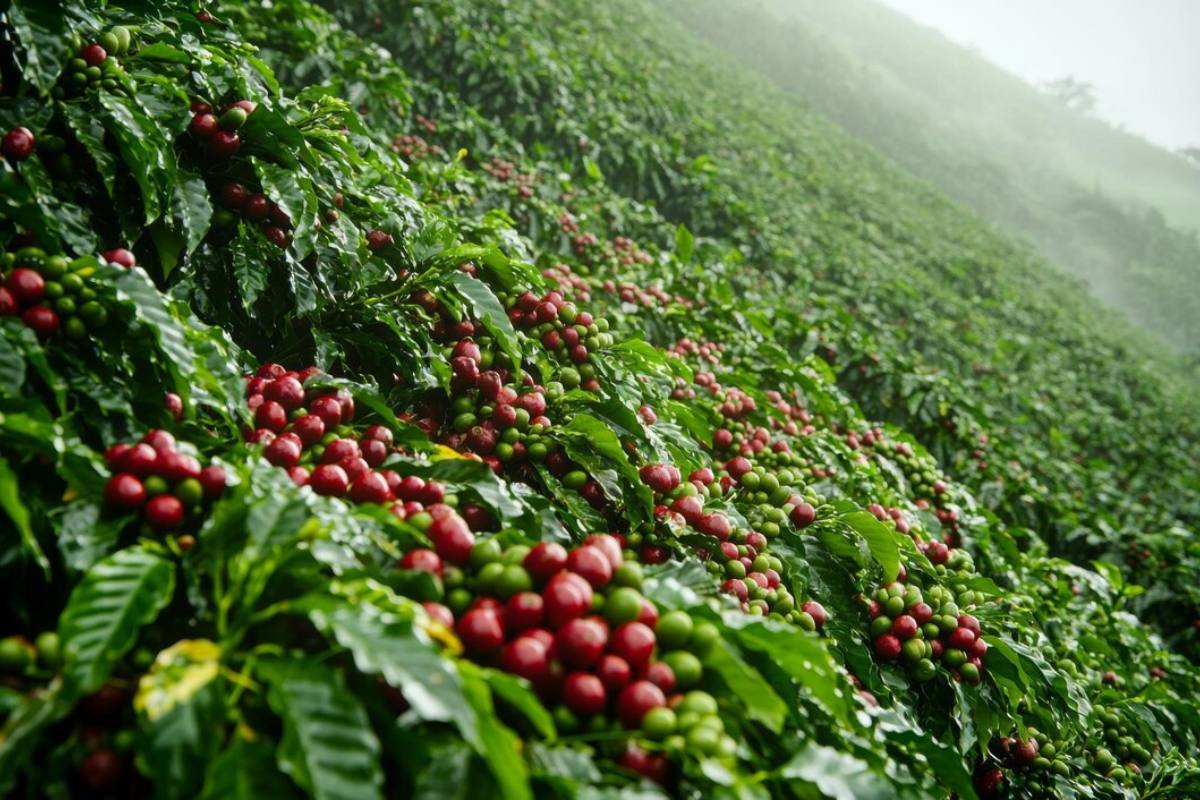When you sip a cup of coffee and notice its vibrant acidity, floral aroma, or smooth chocolate undertones, altitude might be playing a bigger role than you realize. Altitude is one of the most significant factors influencing the flavor, quality, and characteristics of coffee beans.
Why Altitude Matters in Coffee Production
Altitude refers to how high a coffee farm is located above sea level. Most specialty coffees are grown at elevations between 1,000 to 2,000 meters (about 3,300 to 6,600 feet) above sea level. But why does it matter so much?
The answer lies in how the coffee cherries develop. At higher elevations:
- Temperatures are cooler, which slows down the maturation of coffee cherries.
- Beans develop more slowly, allowing them to build complex sugars and acids.
- This results in coffees that often have brighter acidity, refined aromas, and complex, vibrant flavors.
Additionally, slower growth at high altitudes leads to denser beans, which are highly prized in the specialty coffee industry for their ability to deliver consistency and complex flavor during roasting.
How High Elevation Affects Coffee Flavor
Low Altitudes (Below 1,000 meters)
- Faster cherry development.
- Beans tend to be softer.
- Flavors are simpler, often with earthy, nutty, or chocolate notes and lower acidity.
Medium Altitudes (1,000–1,500 meters)
- Balanced growing conditions.
- Coffees are smooth, approachable, often with mild fruitiness or gentle sweetness.
High Altitudes (1,500–2,000+ meters)
- Slower growth due to cooler temperatures.
- Beans become denser and more flavorful.
- Flavors include floral, citrus, berry, or wine-like acidity, combined with sweetness and clarity. These coffees tend to have elegant complexity, often highly sought after by specialty roasters.
Altitude by Country Examples
- Ethiopia: Grown often at 1,800–2,200 meters. Expect vibrant acidity, floral notes, and tea-like bodies.
- Colombia: Ranges from 1,200 to 2,000 meters, producing balanced cups with chocolate, red fruits, and caramel tones.
- Brazil: Typically lower altitudes around 800–1,200 meters, leading to nuttier, chocolate-heavy, low-acidity flavors.
- Kenya: Farms at 1,500–2,100 meters produce juicy, berry-like, and wine-toned coffees, with lively acidity.
These altitude variations are part of what makes coffee from each country so unique.
Altitude and Bean Density
Higher altitude beans are denser because they grow slowly under cooler conditions. Dense beans are preferred for specialty roasting because they:
- Withstand higher roasting temperatures without burning.
- Develop complex flavor profiles with clarity and balance.
- Offer better consistency during brewing, leading to a more enjoyable cup.
Labeling: What “SHG” or “Strictly High Grown” Means
On some coffee bags, you may notice labels like:
- SHG (Strictly High Grown) or
- SHB (Strictly Hard Bean)
These terms indicate that the coffee was grown at high altitudes (typically above 1,200 meters). It’s often a mark of superior quality, though flavor preference still depends on individual taste.
Does Higher Always Mean Better?
Not always. While high-altitude coffees are prized for their complexity and brightness, low and medium-altitude coffees can be rich, chocolatey, smooth, and full-bodied — flavors that many coffee lovers enjoy just as much. It all comes down to personal preference and how the beans are roasted.
Why Altitude Matters to You as a Coffee Drinker
Understanding altitude helps you select coffee that matches your preferences:
- Love bright, fruity, floral coffees? Look for high-altitude origins like Ethiopia, Kenya, or parts of Colombia.
- Prefer rich, chocolatey, nutty flavors? Go for Brazilian coffees or lower-elevation Colombian farms.
This knowledge empowers you to explore different flavor profiles and enhances your appreciation for how geography shapes the coffee experience.
Conclusion: A Key to Coffee Appreciation
Altitude is a major player in what ends up in your cup. From fruity and bright to smooth and chocolatey, knowing about altitude can help you better understand why you love certain coffees — and guide you to discover even more incredible flavors. Next time you brew, think about the mountain, the soil, and the climate that contributed to that delicious cup.
